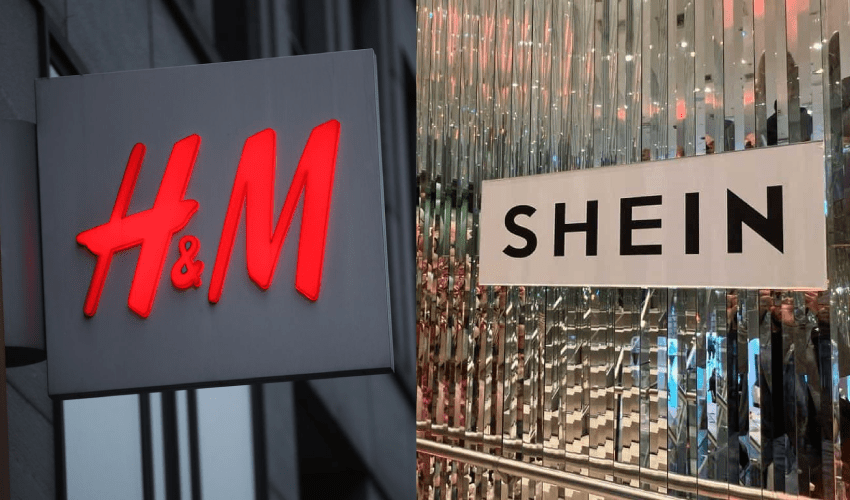- H&M and Shein are engaged in a legal battle over accusations of design theft, with H&M claiming Shein copied its original designs, leading to unfair competition and brand dilution.
- Design theft is a widespread issue in the fashion industry, impacting both established and emerging brands, stifling innovation, and eroding brand identity.
- The case highlights the importance of robust intellectual property protection in fashion, the role of online platforms in shaping consumer choices, and the growing demand for ethical fashion practices.
In the midst of this dynamic environment, a legal battle has erupted between two fashion giants – H&M and Shein.
H&M, a renowned Swedish multinational clothing-retail company, has accused Shein, an emerging Chinese fast-fashion retailer, of stealing its designs.
The dispute has escalated to the courts, with H&M seeking justice for what they claim is blatant plagiarism.
Before delving into the legal intricacies of the case, it’s essential to understand the rapid rise of Shein. Founded in 2008, Shein quickly became a prominent player in the fast-fashion industry, leveraging its online presence and affordability to attract millions of fashion-forward customers worldwide.
The brand’s ability to churn out trendy designs at astonishingly low prices has driven its success.
H&M’s Legacy in Fashion
On the other hand, H&M boasts a rich history and a well-established reputation in the fashion world. Founded in 1947, H&M has expanded globally, offering many stylish and accessible clothing options. Throughout the years, the brand has collaborated with celebrated designers, further solidifying its position as a fashion industry leader.
The Accusations
H&M’s accusations against Shein focus on alleged design theft. The Swedish brand claims that Shein has shamelessly copied several of its original designs, leaving H&M to deal with the repercussions of unfair competition and brand dilution. Such accusations strike at the heart of the fashion industry, where creativity and innovation are prized and protected.
Also Read:
Share With Care Campaign Raises Awareness on Sharing Child Photos Online
The Impact on Fashion Brands
Design theft is a pervasive issue in the fashion world, posing significant challenges for established and emerging brands. When smaller companies invest time and resources into creating unique designs, larger competitors may take advantage of their creativity, mass-producing knockoffs that undercut the original designers’ market share. This unfair practice can stifle innovation, deter investment in new designs, and erode the distinctive identity of fashion brands.
The Legal Battle
The legal battle between H&M and Shein has garnered attention from fashion enthusiasts, industry insiders, and legal experts alike. H&M’s legal team has filed a lawsuit against Shein, seeking compensation for damages caused by the alleged design theft and demanding an injunction to prevent further unauthorized use of their designs.
In response, Shein’s legal representatives have denied any wrongdoing, asserting that their designs are original and not copied from H&M or any other established brands. They argue that similarities between the two companies’ designs may be coincidental, given the vast number of fashion designs circulating in the market.
Intellectual Property Protection in Fashion
The case between H&M and Shein underscores the importance of robust intellectual property protection in the fashion industry. Designers and fashion brands often rely on copyright, trademark, and design patents to safeguard their creative works from imitation and misuse. These legal protections serve as a shield against design theft and help maintain a competitive and innovative marketplace.
The Role of Online Platforms
In the age of e-commerce, online platforms play a critical role in shaping consumer choices and fashion trends. While they provide a gateway for fashion brands to reach a global audience, they also raise concerns regarding the authenticity of products and designs. Some online marketplaces may inadvertently facilitate the sale of counterfeit or copied items, leading to disputes like the one between H&M and Shein.
The Consumer Perspective
As the legal battle unfolds, consumers are keeping a close eye on the developments. Many fashion-conscious individuals value originality and prefer to support brands that prioritize creativity and ethical practices. Allegations of design theft can tarnish a brand’s reputation, leading consumers to question the authenticity of its offerings.
Industry-Wide Ramifications
Beyond the specific case of H&M versus Shein, the outcome of this legal battle could have broader implications for the fashion industry as a whole. A favourable ruling for H&M would reinforce the significance of intellectual property rights and encourage other brands to take a more proactive approach to safeguarding their designs. Conversely, if Shein is vindicated, it may set a precedent for more leniency concerning design similarities in the fast-fashion sphere.
Also Read:
Pakistan Launches First Gender Bond to Empower Women-Led Businesses
The Call for Ethical Fashion
Amidst this legal showdown, there is a growing call for ethical fashion practices. Consumers, activists, and industry leaders are urging fashion brands to prioritize sustainability, fair labour practices, and originality. Embracing ethical principles can not only enhance a brand’s reputation but also foster a deeper connection with conscious consumers.
What do you think?
Share your thoughts with us below. Stay tuned to WOW360.
